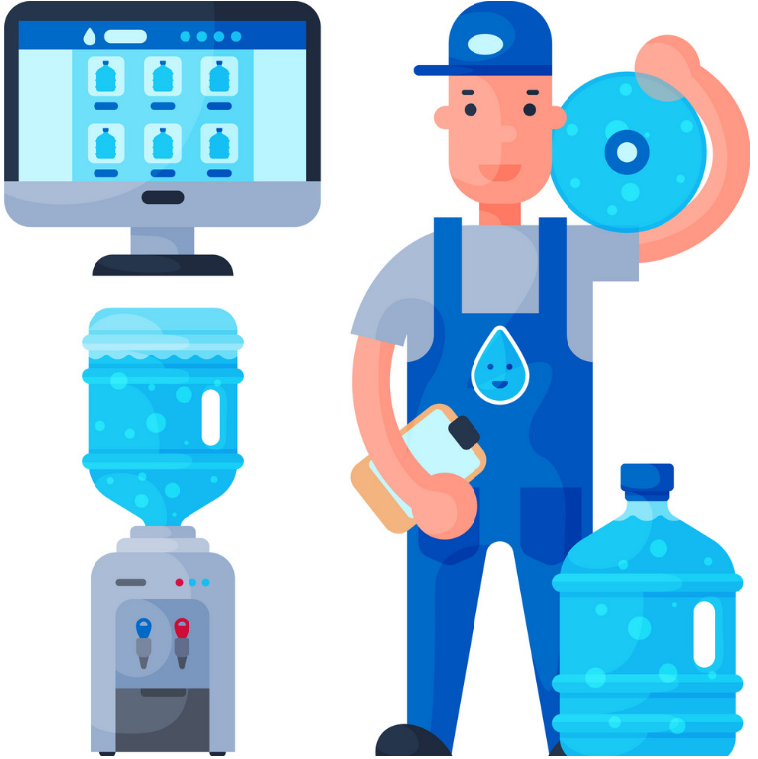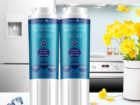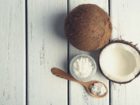How many American people have access to clean and safe water? Where do they get it from, and how much do they pay for it? Getting clean drinking water isn’t as simple as turning on the tap. Access to safe water is a growing issue in the U.S. – and an expensive one. Let’s see how people in the United States obtain their daily pure and clean drinking water.
Bottled Water
Bottled water, now firmly the largest soft drink in the US in retail volume terms, is poised to continue capturing the drink sales share among US consumers seeking healthier beverage options. Bottled water has been used in place of tap water for its convenience, better taste and perceived purity. Despite the common belief that bottled water is safer to drink and has better taste than tap water, scientific studies have shown that the sales and consumption of bottled water can have environmental and social impacts.
Cons:
- 93% of bottled water contains microplastics (microplastics are small pieces of plastic which have a number of chemicals added at the manufacturing stage, they are possibly released in the body. In the sufficient concentrations, the chemicals can injure and kill cells. )
- More than a quarter of bottled water is just municipal tap water
- It takes 3L of water to produce a 0.5L bottle of water
- in 2016 the U.S only recycled 28% of PET plastic – more than $1 billion worth of plastic is wasted each year
- Bottled water is more expensive than gas per gallon

Water Delivery
Since untreated tap water is frequently contaminated with microorganisms and other elements which can cause waterborne illnesses in humans, filtered water or purified water is essential for survival and for sustaining a healthier living. Fortunately, many entrepreneurs have sought alternatives to tap water by sourcing pure water while enhancing their bottled water delivery services to American households and corporations, such as American Pure Spring Water, offering refreshing, hydrating spring water.
Cons:
The cost of having bottle service may be inconvenient to some, along with the cost of having to constantly replace the bottled water. Plus, bottled water dispensers use plastic water bottles as the water supply – being a major contributor to environmental damage. So, in the long run, water delivery is not typically considered environmentally friendly.

Clean Water Vending Machine
The benefits of a clean water vending machine are numerous, particularly as a public and environmental service. Clean water vending machines may prove to be much more environment-friendly and reliable than traditional bottle-filled machines. They are connected to the public water system, essentially guaranteeing that they will never run out of stock. However, accessing drinking water from a vending machine costs in terms of time and effort. For some, especially the elderly, it is a physical burden; for others, it requires gas money to transport the water to their homes.
Water Store
Water stores fill the need for safe drinking water that tastes great. Most people in the U.S. will buy it because it tastes great or they do not trust the quality of water coming from the tap. Apart from water, water stores also provide water filters and devices, water dispensers, and water containers.
Water Filters
Pitcher Water Filter
These are fairly popular water filters that you can easily purchase in any grocery store. The water filtration happens in the water pitchers and uses granulated activated charcoal to remove contaminants and improve water flavor. Also, the up-front costs of pitcher water filters are low.
Cons:
- The carbon filter will not remove pesticides, heavy metals, herbicides, fluoride or emerging contaminants.
- Requiring frequent replacement of cartridges, so may not be the most economical solution in the long-run despite up-front costs
- Unless you make ice cubes the old-fashioned way, you will not have ice made from filtered water
Tap Filter
Tap water filters, also called faucet-mounted filtration systems, attach directly to your faucet. These filters are inexpensive and easy to install. They rely on activated charcoal filters to reduce chlorine, taste and odors. Some also reduce lead. Unfortunately, their sizes, coupled with the speed of water moving through the filter, limit their efficiency. They do nothing to prevent the spread of microorganisms, and each filter can only process about 100 gallons before a replacement.
Reverse Osmosis Filter
Reverse osmosis (RO) filters use incoming water pressure to push water through a semipermeable membrane, which can filter out most dissolved solids and contaminants. RO provides very pure drinking water, but the system has its drawbacks. RO filters generate waste water, as contaminants must be periodically flushed off the membrane. Plus, the system depends on water pressure, the faucet flow may be slow.
Refrigerator Water Filter
Many refrigerators now come with built-in water filters which reduce chlorine, volatile organic compounds and a range of man-made chemicals. Some also reduce lead. Refrigerator filters have superior advantages in convenience and low cost. Users can enjoy fresh and clean drinking water or ice at their homes whenever. The standard filtration capacity for a refrigerator water filter is 300 gallons. Using a Clatterans fridge water filter is a wise investment for constant clean water supply. Designed with coconut activated carbons, all fridge filters are capable of effectively eliminating 99% contaminants and chemical impurities. Above all, Clatterans filters all are on sale. Be quick! Time to improve your water quality and save money!







… [Trackback]
[…] Read More Info here on that Topic: blog.clatterans.com/clean-water/ways-of-getting-drinking-water-in-us/ […]
… [Trackback]
[…] Read More here to that Topic: blog.clatterans.com/clean-water/ways-of-getting-drinking-water-in-us/ […]
… [Trackback]
[…] Read More Information here on that Topic: blog.clatterans.com/clean-water/ways-of-getting-drinking-water-in-us/ […]
… [Trackback]
[…] Find More here to that Topic: blog.clatterans.com/clean-water/ways-of-getting-drinking-water-in-us/ […]
… [Trackback]
[…] Information to that Topic: blog.clatterans.com/clean-water/ways-of-getting-drinking-water-in-us/ […]
… [Trackback]
[…] Find More Information here on that Topic: blog.clatterans.com/clean-water/ways-of-getting-drinking-water-in-us/ […]
… [Trackback]
[…] Information on that Topic: blog.clatterans.com/clean-water/ways-of-getting-drinking-water-in-us/ […]
… [Trackback]
[…] Find More Information here on that Topic: blog.clatterans.com/clean-water/ways-of-getting-drinking-water-in-us/ […]
… [Trackback]
[…] Find More here to that Topic: blog.clatterans.com/clean-water/ways-of-getting-drinking-water-in-us/ […]
… [Trackback]
[…] Read More here to that Topic: blog.clatterans.com/clean-water/ways-of-getting-drinking-water-in-us/ […]
… [Trackback]
[…] There you can find 51730 additional Information on that Topic: blog.clatterans.com/clean-water/ways-of-getting-drinking-water-in-us/ […]
… [Trackback]
[…] Find More on that Topic: blog.clatterans.com/clean-water/ways-of-getting-drinking-water-in-us/ […]
… [Trackback]
[…] Find More on on that Topic: blog.clatterans.com/clean-water/ways-of-getting-drinking-water-in-us/ […]
… [Trackback]
[…] Information to that Topic: blog.clatterans.com/clean-water/ways-of-getting-drinking-water-in-us/ […]
… [Trackback]
[…] Read More on to that Topic: blog.clatterans.com/clean-water/ways-of-getting-drinking-water-in-us/ […]
… [Trackback]
[…] There you will find 53609 more Information to that Topic: blog.clatterans.com/clean-water/ways-of-getting-drinking-water-in-us/ […]
Title
[…]Wonderful story, reckoned we could combine some unrelated information, nonetheless actually worth taking a look, whoa did a single find out about Mid East has got more problerms too […]
… [Trackback]
[…] Read More Info here to that Topic: blog.clatterans.com/clean-water/ways-of-getting-drinking-water-in-us/ […]
… [Trackback]
[…] Read More Information here on that Topic: blog.clatterans.com/clean-water/ways-of-getting-drinking-water-in-us/ […]
… [Trackback]
[…] Read More Info here on that Topic: blog.clatterans.com/clean-water/ways-of-getting-drinking-water-in-us/ […]
… [Trackback]
[…] Here you can find 65483 more Information to that Topic: blog.clatterans.com/clean-water/ways-of-getting-drinking-water-in-us/ […]
[…] Read 10609 Additional Info here to that Topic: blog.clatterans.com/clean-water/ways-of-getting-drink… […]
… [Trackback]
[…] Info to that Topic: blog.clatterans.com/clean-water/ways-of-getting-drinking-water-in-us/ […]
… [Trackback]
[…] Read More to that Topic: blog.clatterans.com/clean-water/ways-of-getting-drinking-water-in-us/ […]
… [Trackback]
[…] Read More Info here on that Topic: blog.clatterans.com/clean-water/ways-of-getting-drinking-water-in-us/ […]
… [Trackback]
[…] Info to that Topic: blog.clatterans.com/clean-water/ways-of-getting-drinking-water-in-us/ […]
… [Trackback]
[…] Read More Information here on that Topic: blog.clatterans.com/clean-water/ways-of-getting-drinking-water-in-us/ […]
… [Trackback]
[…] Read More on on that Topic: blog.clatterans.com/clean-water/ways-of-getting-drinking-water-in-us/ […]
… [Trackback]
[…] Find More to that Topic: blog.clatterans.com/clean-water/ways-of-getting-drinking-water-in-us/ […]
… [Trackback]
[…] Find More on on that Topic: blog.clatterans.com/clean-water/ways-of-getting-drinking-water-in-us/ […]
… [Trackback]
[…] Read More here on that Topic: blog.clatterans.com/clean-water/ways-of-getting-drinking-water-in-us/ […]
… [Trackback]
[…] Find More Info here on that Topic: blog.clatterans.com/clean-water/ways-of-getting-drinking-water-in-us/ […]
… [Trackback]
[…] Read More on on that Topic: blog.clatterans.com/clean-water/ways-of-getting-drinking-water-in-us/ […]
… [Trackback]
[…] Find More Information here on that Topic: blog.clatterans.com/clean-water/ways-of-getting-drinking-water-in-us/ […]
… [Trackback]
[…] Read More Information here on that Topic: blog.clatterans.com/clean-water/ways-of-getting-drinking-water-in-us/ […]
… [Trackback]
[…] Information on that Topic: blog.clatterans.com/clean-water/ways-of-getting-drinking-water-in-us/ […]
… [Trackback]
[…] Read More to that Topic: blog.clatterans.com/clean-water/ways-of-getting-drinking-water-in-us/ […]
… [Trackback]
[…] Find More on on that Topic: blog.clatterans.com/clean-water/ways-of-getting-drinking-water-in-us/ […]
… [Trackback]
[…] Read More here to that Topic: blog.clatterans.com/clean-water/ways-of-getting-drinking-water-in-us/ […]
… [Trackback]
[…] Read More here on that Topic: blog.clatterans.com/clean-water/ways-of-getting-drinking-water-in-us/ […]
… [Trackback]
[…] Find More Info here on that Topic: blog.clatterans.com/clean-water/ways-of-getting-drinking-water-in-us/ […]
… [Trackback]
[…] There you will find 70048 additional Info on that Topic: blog.clatterans.com/clean-water/ways-of-getting-drinking-water-in-us/ […]
Ways of Getting Drinking Water in US | Choose Your Easy Access to Healthy Drinking Water
https://z-logg.com/index.php/component/k2/item/4?start=54450
Ways of Getting Drinking Water in US | Choose Your Easy Access to Healthy Drinking Water
https://www.jmsc.co.uk/2016/09/do-you-need-a-remote-coach/
Ways of Getting Drinking Water in US | Choose Your Easy Access to Healthy Drinking Water
https://www.manuelarenasfoto.com/hello-world-2/
çeşme transfer
çeşme transfer
porno izleme sitesi
porno izleme sitesi
izmir travesti
izmir travesti
Ways of Getting Drinking Water in US | Choose Your Easy Access to Healthy Drinking Water
https://natcapsolutions.org/the-challenge-of-globalization/
yasam ayavefe
yasam ayavefe
Ways of Getting Drinking Water in US | Choose Your Easy Access to Healthy Drinking Water
https://www.audio-kaitori.com/blog/uncategorized/kobe-kaitori/
Ways of Getting Drinking Water in US | Choose Your Easy Access to Healthy Drinking Water
https://highpixel.com/practical-phones/
travesti.site
travesti.site
Ways of Getting Drinking Water in US | Choose Your Easy Access to Healthy Drinking Water
http://www.reportervirtual.ro/about/
Ways of Getting Drinking Water in US | Choose Your Easy Access to Healthy Drinking Water
https://tangkipedia.com/distributor-toren-tangki-air-plastik-hdpe-sidoarjo/
Ways of Getting Drinking Water in US | Choose Your Easy Access to Healthy Drinking Water
http://redsnowcollective.ca/wordpress/open-221/
kralbet
kralbet
vassycalvados.fr
vassycalvados.fr
lugabet giriş
lugabet giriş
betgross giriş
betgross giriş
Ways of Getting Drinking Water in US | Choose Your Easy Access to Healthy Drinking Water
http://imasbiiki.net/tag/雑談/
jojobet
jojobet
jojobet twitter
jojobet twitter
Ways of Getting Drinking Water in US | Choose Your Easy Access to Healthy Drinking Water
https://paslpool.es/component/k2/item/15-portobello-pups-macaroni-salad?start=271050
Ways of Getting Drinking Water in US | Choose Your Easy Access to Healthy Drinking Water
http://www.useuse.de/uselog/?p=620
Ways of Getting Drinking Water in US | Choose Your Easy Access to Healthy Drinking Water
https://www.archerthepainter.com.au/2018/07/thinking-about-undercoat-2/
Ways of Getting Drinking Water in US | Choose Your Easy Access to Healthy Drinking Water
https://gac-cont.com/2019/01/29/construction-employment-news-april-2019/
samsung taşınabilir ssd
samsung taşınabilir ssd
bursa travesti
bursa travesti
Ways of Getting Drinking Water in US | Choose Your Easy Access to Healthy Drinking Water
https://jobsforcasemanagement.com/
Ways of Getting Drinking Water in US | Choose Your Easy Access to Healthy Drinking Water
http://extremekids.com/parents/Wordpress/?p=46
bmw
bmw
kadinlar
kadinlar
Ways of Getting Drinking Water in US | Choose Your Easy Access to Healthy Drinking Water
http://brightcareer.net/2020/12/20/what-are-the-advantages-of-a-recruitment-agency20122020/
istanbul travesti
istanbul travesti
ankara travesti
ankara travesti
edebiyat tumblr
edebiyat tumblr
ankaratravesti.xyz
ankaratravesti.xyz
Ways of Getting Drinking Water in US | Choose Your Easy Access to Healthy Drinking Water
https://www.anyikim.com.tr/blog-headline-here/
Ways of Getting Drinking Water in US | Choose Your Easy Access to Healthy Drinking Water
http://kamadobono.se/se/component/k2/item/128-ut-elit-nisi-vehicula-id-suscipit-id?limit=10
ankara travesti ilanları
ankara travesti ilanları
sultangazi rent a car
sultangazi rent a car
istanbul dental teknik servis
istanbul dental teknik servis
gebze epoksi zemin kaplama
gebze epoksi zemin kaplama
rize tumblr
rize tumblr
Ways of Getting Drinking Water in US | Choose Your Easy Access to Healthy Drinking Water
http://www.perlustils.lv/2019/09/meistarklase-musina/
prague tantra massage
prague tantra massage
prague erotic massage
prague erotic massage
inovapin.com
inovapin.com
gaziantep saat tamiri
gaziantep saat tamiri
kütahya günlük apart daire
kütahya günlük apart daire
takipçi satın al tumblr
takipçi satın al tumblr
kütahya günlük apart
kütahya günlük apart
Instagram URL Shortener
[…]just beneath, are many absolutely not related web sites to ours, having said that, they’re surely really worth going over[…]